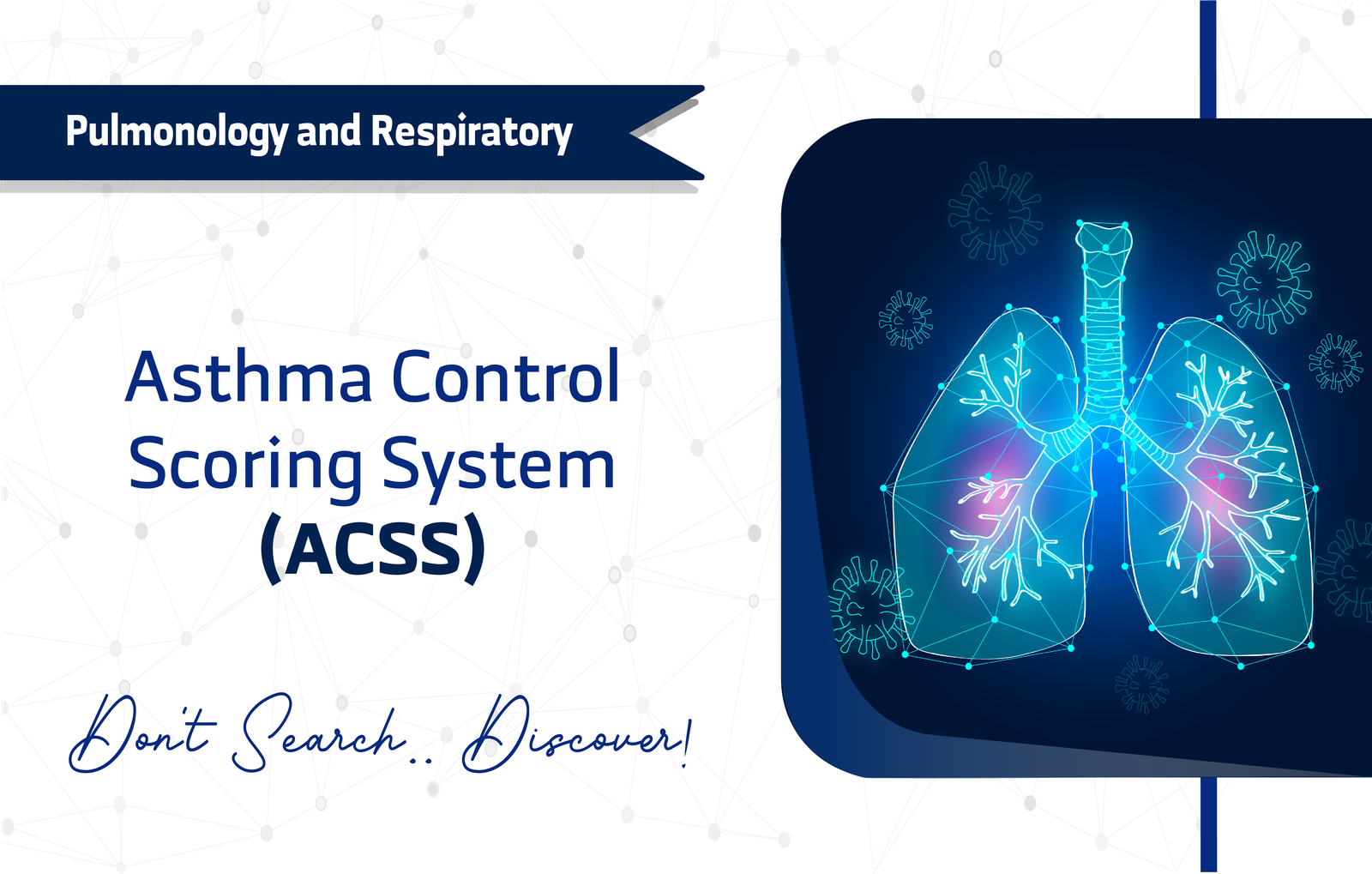Introduction
The Asthma Control Scoring System (ACSS) serves as a validated, patient-reported tool that evaluates and quantifies asthma control in patients. Respiratory specialists developed the tool in the 2000s, and because of its extensive referencing in guidelines from the Global Initiative for Asthma (GINA), the ACSS has become a cornerstone in modern respiratory medicine.
Indeed, given its extensive citation history in asthma research, the tool aids clinicians and researchers in assessing symptom severity, the need for rescue medication, and overall disease management. Consequently, its structured approach provides a reliable framework for monitoring patient outcomes and guiding therapeutic decisions effectively.
Key Features of The Asthma Control Scoring System (ACSS)
Purpose and Use
The Asthma Control Scoring System (ACSS) helps clinicians evaluate and quantify asthma control in patients. It supports the assessment of symptom severity, frequency of rescue medication use, and the overall effectiveness of asthma management. By offering a structured scoring method, the ACSS enables healthcare providers to track patient progress, optimize treatment plans, and make informed clinical decisions.
Target Population
Experts have validated the ACSS for use in individuals aged 12 and older. Therefore, it is suitable for a wide range of patient populations where asthma is prevalent. This includes:
- Adolescents (13-17 years)
- Young Adults (18-24 years)
- Middle-Aged Adults (25-44 years)
- Older Adults (45-64 years)
- Seniors (65+ years)
Additionally, pediatric versions are available for assessing asthma control in younger children.
Structure
The ACSS consists of a variable number of questions, typically between five and seven, which the designers organized under the main domain of Asthma Control. Furthermore, the questionnaire breaks down these questions into specific sub-domains to provide a comprehensive assessment. These sub-domains include:
- Symptom frequency: This covers both daytime and nighttime asthma symptoms.
- Nocturnal symptoms: This specifically evaluates sleep disturbances due to asthma.
- Rescue medication use: This tracks the frequency of rescue inhaler use.
- Activity limitation: This assesses the impact of asthma on daily activities.
Scoring Method
The ACSS utilizes a clear and structured scoring system that enhances both clinical interpretation and research standardization. The system scores each question using a Likert scale, which typically ranges from 1 to 5, depending on the specific version of the questionnaire. After a patient completes all items, the user calculates the total score by summing individual responses. Subsequently, a clinician interprets the resulting score using the following cut-offs:
- ≤19: This score indicates poor asthma control and may require immediate intervention.
- 20–24: This range suggests the condition is well-controlled, though continued monitoring is recommended.
- 25: This score reflects fully controlled asthma, indicating optimal management.
This intuitive scoring framework enables healthcare providers to quickly assess the patient’s asthma status and make informed decisions. In addition, it provides a standardized metric that researchers can use to compare outcomes across studies or treatment arms.
Administration Format, Cost, and Licensing
Because of its efficient design, the ACSS takes approximately 5-10 minutes to complete. Users can administer it through flexible formats such as:
- Paper-based forms
- Digital online platforms
A significant advantage for researchers and clinicians is that the questionnaire requires no special training to administer or interpret because it is self-administered. Moreover, the ACSS is free to use for non-commercial purposes under an open-access license, which makes it highly accessible for widespread clinical and research use.
Applications of The Asthma Control Scoring System (ACSS)
The ACSS offers substantial clinical utility by translating subjective symptoms into objective scores.
- Screening: First, clinicians use these scores to screen patients and identify levels of asthma control.
- Monitoring: Second, the tool supports ongoing monitoring of a patient’s condition, helping track symptom progression or improvement.
- Treatment Planning: Finally, scores guide clinicians in adjusting treatment plans based on whether control is poor, good, or complete.
Languages and Accessibility
To support its global application in multinational studies and diverse clinical settings, the ACSS is available in multiple languages. For example, these include:
- English
- Spanish
- French
- German
Indeed, this multilingual availability ensures its utility across different cultural contexts, which facilitates inclusive and comparable international research.
Reliability and Validity
Numerous experts recognize the ACSS as a highly reliable and valid instrument. Its strong psychometric properties are demonstrated by a Cronbach’s alpha coefficient that typically ranges from 0.75 to 0.85, which indicates good internal consistency. Furthermore, the tool’s validity finds support in numerous peer-reviewed studies and its inclusion in prominent clinical guidelines, such as those published by GINA.
Limitations and Considerations
Despite its strengths, the ACSS has a few limitations:
- Self-report measure: As a self-report measure, patient bias or subjective interpretation may influence the responses.
- Age Restrictions: The standard version is not validated for children under the age of 12, thereby requiring the use of pediatric-specific versions for this group.
Other Versions and Related Questionnaires
While the ACSS is a comprehensive tool, researchers and clinicians can also use other related questionnaires to supplement their assessments. For instance, these alternatives include:
- Asthma Control Test (ACT)
- Asthma Control Questionnaire (ACQ)
In addition to the standard version for adults and adolescents, developers have created specific pediatric versions of the ACSS to cater to younger children.
Additional Resources
- A direct link to the Original Validation Study
- You can access the questionnaire as a PDF through this link
- For inquiries, contact GINA Support via their official website
- For additional asthma management resources, consult the official GINA Reports.
Frequently Asked Questions (FAQ)
- Who can use the ACSS?
Clinicians, researchers, and other healthcare professionals can use the ACSS to assess asthma control in patients aged 12 and older. - How long does it take to complete the ACSS?
Typically, patients complete the questionnaire in 5-10 minutes, making it highly suitable for routine clinical assessments. - How is the ACSS administered?
The ACSS is a self-administered questionnaire available in both paper-based and digital formats. - Is there any cost to using the ACSS?
The ACSS is free for use under an open-access license.
A Word from ResRef about The Asthma Control Scoring System (ACSS)
The ACSS is a robust tool for asthma control assessment, which global respiratory experts endorse. Its ability to quickly and reliably quantify symptom control makes it indispensable for both clinicians aiming to optimize patient care and researchers investigating new asthma therapies. Ultimately, its widespread adoption leads to better patient outcomes and more informed treatment decisions.
References
- LeBlanc, A., Robichaud, P., Lacasse, Y. and Boulet, L.-.-P. (2007), Quantification of asthma control: validation of the Asthma Control Scoring System. Allergy, 62: 120-125. link








